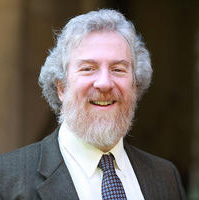Shema’: The “Secrets” of the Eyes

Much of our liturgy and liturgical experience is verbal and analytic, based upon precisely what words we say and the meaning(s) found and embedded in those words. In these essays, we have also looked extensively at the way in which music, melody, and vocal quality add levels of meaning and experience. However, we are not disembodied minds and souls, and there are more than a few occasions when the disposition of the body is engaged to greater or lesser extent in the experience of liturgy. Most dramatically, we might think of the prostrations on Rosh Hashanah and Yom Kippur, but even in the daily experience, we think naturally of standing for the ‘Amidah, among many other customs and practices.
It is well known that the first verse of the Shema’ is seen as among the most important utterances of Jewish life, traditionally seen as the individual “accepting the Kingdom of Heaven.” These six words are traditionally chanted aloud, in Hebrew, with great precision—with an aspiration to attain kavanah (a complex concept perhaps to be understood here as “meaning,” “attitude,” or “significance”). It is widely observed that many people who are aware of and responsive to certain traditional practices will cover their eyes with their right hand for this line.
Many books and commentaries will offer the explanation that this is le‘orrer hakavanah (to arouse kavanah), and we find in the Shulhan Arukh (OH 61:5) a slightly different nuance that this practice is to prevent the individual from gazing upon anything [external] that might preclude or diminish kavanah. It is interesting, then, to recall the talmudic origin of this custom, and some remarkably diverse analyses found in the traditional commentaries. In BT Berakhot 13b, we read, “This was the Keriat Shema’ [recitation of the Shema’] of Rabbi Yehudah HaNasi . . . When [in the middle of his lesson] he would pass his hand in front of his face, he accepted upon himself the Kingdom of Heaven [implying recitation of the first verse of the Shema’].”
The Talmud is concerned with whether Rabbi Yehudah later recited the remainder of the text, but in looking at “embodied” elements, we might reasonably surmise that if it were his intent to interrupt his class for a brief moment (all that would be needed to recite six words), he might cover his face (eyes) for a moment in order not to be distracted by his students. With this reading, he might or might not cover his face in a less distracting environment.
An interesting alternative approach is offered by Hai Gaon. He suggests that Rabbi Yehudah would be entirely capable of reciting these words with full kavanah under almost any circumstances, and that the goal of covering the face was for Rabbi Yehudah to conceal his eyes from his students. There is a suggestion that one should direct the eyes in each of the six spatial directions while accepting the Kingdom of God so as to accept Divine Sovereignty throughout the world. The precise eye movements of the master should not be casually revealed to the students, and the covering hand assures spiritual privacy.
So we find the same “protective” act is (like so many things) ambiguous. Is it to protect the inner world from outside distraction, or to protect the outer world from the depths of the inner? Or perhaps both?



